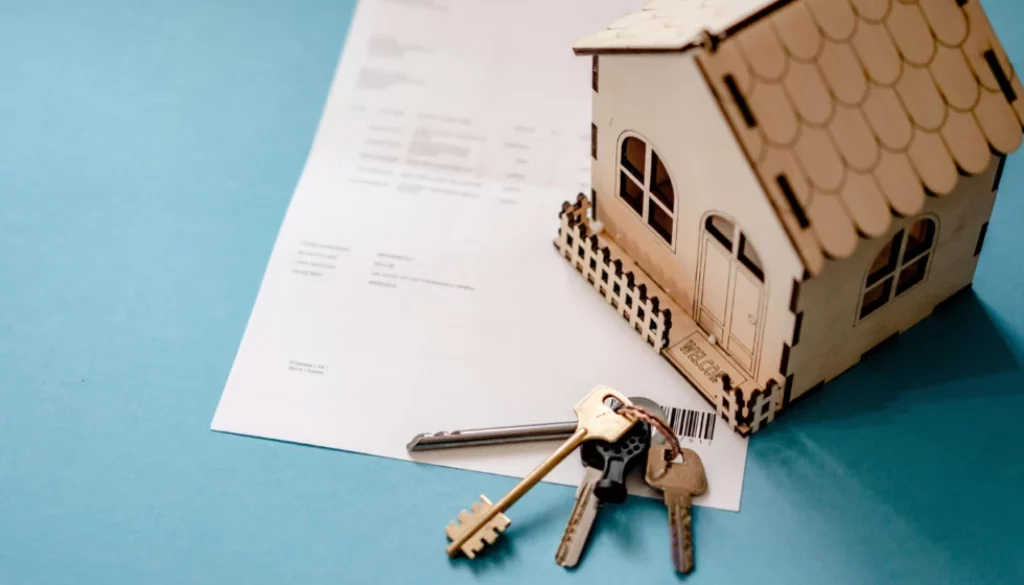HELOC 101: Everything you need to know
What is a HELOC?
A Home Equity Line of Credit (HELOC) is a type of loan that allows homeowners to borrow against the equity in their homes. Here are the key features and details:
- Revolving Credit Line: Unlike a traditional loan, which provides a lump sum, a HELOC works more like a credit card. You have a credit limit, and you can borrow up to that amount, repay it, and borrow again during the draw period.
- Equity-Based: The amount you can borrow is typically based on the amount of equity you have in your home. Equity is the difference between your home’s current market value and the current balance of your home mortgage loan (if you have a mortgage).
Here are some key terms you should understand if you are considering a HELOC:
- Variable Interest Rates: HELOCs often come with variable interest rates, which means the rate can fluctuate based on market conditions.
- Draw Period: This is the initial phase, usually 5-10 years, where you can borrow money as needed and only pay interest on what you borrow.
- Repayment Period: After the draw period ends, you enter the repayment phase, typically 10-20 years, during which you can no longer borrow additional funds and must repay the outstanding balance.
Pros & Cons of a HELOC
Advantages
- Flexibility: Borrow what you need when you need it, and pay interest only on the amount you borrow.
- Potential Tax Benefits: Interest paid on a HELOC might be tax-deductible (consult a tax advisor).
Disadvantages
- Variable Rates: Fluctuating interest rates can lead to higher payments over time.
- Risk to Home: A HELOC is secured by your home and defaulting on payments can put your home at risk.
Do I need a HELOC?
Deciding whether you need a HELOC depends on your specific financial situation, needs, and goals. Here are some common scenarios in which a HELOC can be very beneficial:
- Home Improvement Projects: if you have significant home improvement projects planned, a HELOC can provide the additional funds, without affecting your other assets.
- Debt Consolidation: if you have high-interest debt (like credit card debt), a HELOC might offer a lower interest rate, helping you save money on interest payments. Additionally, consolidating multiple debts into a single HELOC payment can simplify your financial management.
- Major Expenses: You can use your HELOC to pay for various types of expenses, like education or medical bills.
- Access to Cash: A HELOC can serve as a financial safety net, providing access to funds in case of emergencies.
How to get a HELOC?
Obtaining a Home Equity Line of Credit (HELOC) is very similar to the process of obtaining a regular home mortgage loan and involves several steps:
- Research Lenders
Look at banks, credit unions, and online lenders. Compare interest rates, fees, and terms. Check customer reviews and ratings to gauge the lender’s reputation.
- Gather Documentation
Your mortgage lender will provide you with a list of required documents to underwrite your HELOC. This list typically covers proof of income (recent pay stubs, W-2 forms, or tax returns), proof of assets (most recent bank statements), and the latest statement showing your current loan balance.
- Apply for the HELOC
Your chosen lender will require you to fill out the application form (online, over the phone, or in person) and submit the required documentation.
- Underwriting and Approval
The lender will check your credit score and credit history, and order a home appraisal to confirm your home’s current market value. They will review your financial situation, home equity, and ability to repay the HELOC.
- Review Terms and Conditions
If the HECOL is approved you need to understand all the applicable terms and conditions, such the interest rate (fixed or variable), draw and repayment periods, and any fees associated with this transaction (application fees, annual fees, and closing costs).
- Closing
Once everything is ready you will need to sign the loan agreement and other required documents. Then you can access the provided credit line, either through checks or a credit card linked to the HELOC account.
How much does closing cost for a HELOC?
Closing costs for a HELOC can range from a few hundred to several thousand dollars. These costs can vary depending on several factors, including the lender, the loan amount, your location, and the specifics of your home and financial profile. Some lenders offer HELOCs with no closing costs, but these may come with higher interest rates or fees elsewhere in the loan. Typical closing fees you might encounter include: application, credit report, home appraisal, title search and insurances, attorney, flood certification, recording and notary.
Contact multiple lenders to get detailed quotes on the closing costs associated with their HELOC products. Ensure you understand each fee and ask if there are any ways to reduce costs. By understanding the typical closing costs and taking steps to compare and negotiate, you can better manage the expenses associated with obtaining a HELOC.
Should I keep my HELOC if I am not using it?
Whether you should keep your HELOC if you are not using it depends on several factors should align with your financial goals and comfort level. Here are some considerations to help you decide:
- Costs of Keeping The HELOC
- Annual Fees: Some HELOCs come with annual fees. If you are paying an annual fee for a credit line you are not using, it might not make sense to keep it open.
- Inactivity Fees: Some lenders charge fees if the HELOC is not used within a certain period. Check your agreement to see if this applies.
- Impact on Your Credit Score
- Credit Utilization: Having a HELOC can positively affect your credit score by increasing your available credit, thus lowering your credit utilization ratio.
- Length of Credit History: Closing a HELOC could potentially shorten the average length of your credit accounts, which might slightly impact your credit score.
- Future Financial Needs
- Emergency Fund: A HELOC can serve as a backup source of funds in case of emergencies, providing peace of mind knowing you have access to credit if needed.
- Upcoming Expenses: If you anticipate needing funds for home improvements, education, or other major expenses in the near future, keeping the HELOC open can save time and effort compared to reapplying later.
- Lender’s Policies
- Closure by Lender: Some lenders may close inactive HELOCs after a period of inactivity, so check with your lender about their policy.
- Reopening Fees: If you close the HELOC and later decide you need it again, reopening or applying for a new HELOC may involve additional fees or higher interest rates.
- Financial Security
Keeping a HELOC open can provide financial security and flexibility, but if you are concerned about the temptation to borrow unnecessarily, closing it might help you avoid potential debt.
So if the costs are minimal, and you want the security of having a line of credit available for emergencies or future needs, it might make sense to keep the HELOC open, however, ff you are paying fees for a credit line you do not plan to use, or if you are disciplined enough to not need the extra financial cushion, closing the HELOC could save you money and reduce financial complexity.
Bottom line
A HELOC can be a valuable financial tool for homeowners who need access to flexible funding, but comes with significant risks and responsibilities: failure to repay the borrowed amount can result in foreclosure. A HELOC can be used for home improvements, debt consolidation, education expenses and most importantly peace of mind: immediate access to your equity in case of an emergency, without refinancing or selling your home, can prove to be very valuable. Please reach out to me to discuss any HELOC’s related questions at 312-296-4175 or email me at connect@borislending.com. I lend in all 50 states and I am never too busy for your referrals!
I have been in the mortgage industry since 1997 and I understand the anxiety that comes with making the most expensive investment of a lifetime. My objective is to be your advisor, to educate you and to make the mortgage loan transaction as transparent and as stress-free as possible. I enjoy establishing personal connections and work mostly by referral. I thoroughly explain the process and available options, and guide my clients to make choices that best fit their needs and financial goals. Once the underwriting begins I communicate regularly and keep my clients apprised of the loan status from the beginning through the end. My relationship with clients does not end at the closing table. You are my client for life and I am always available to answer your questions and provide you with guidance.


